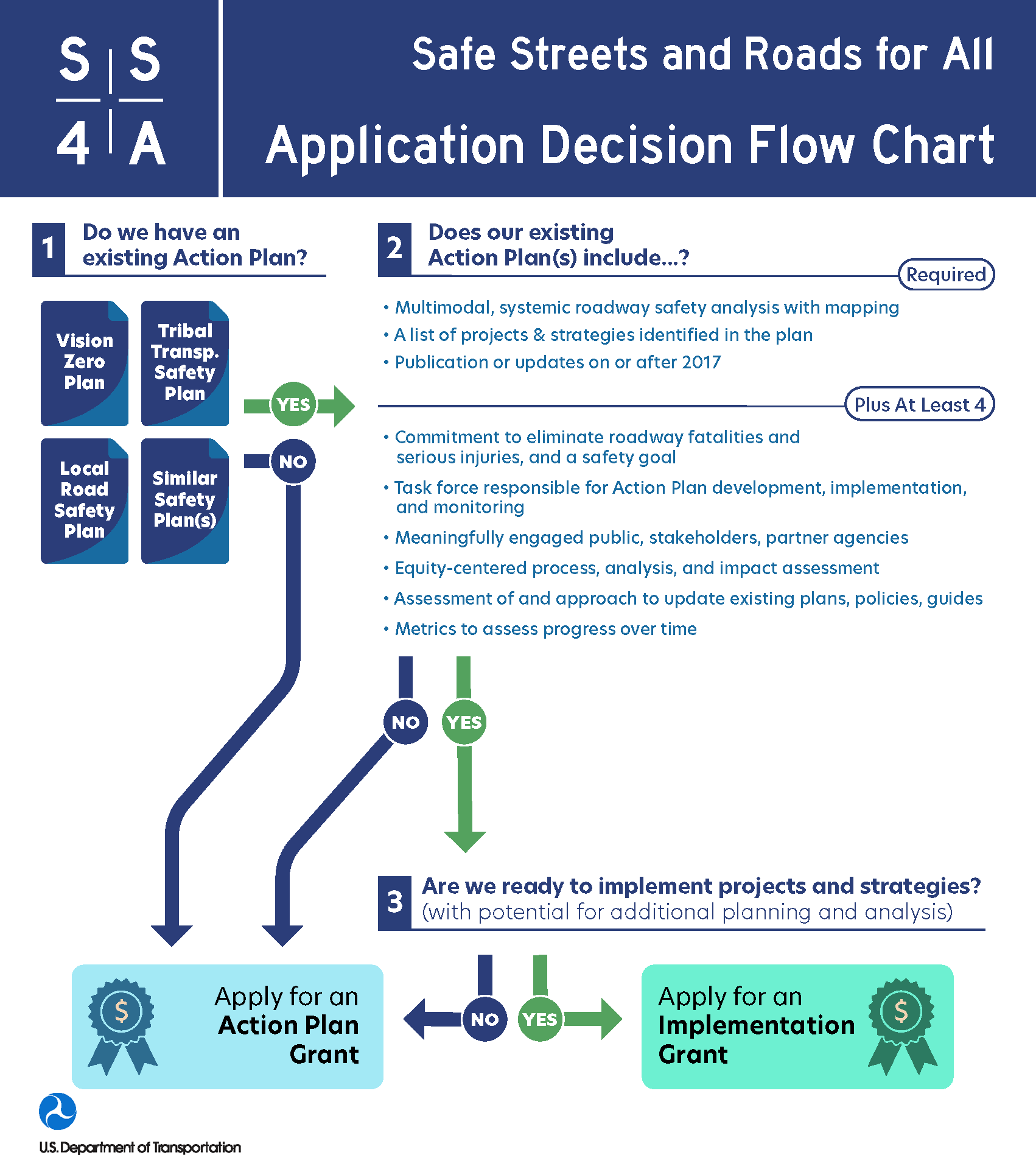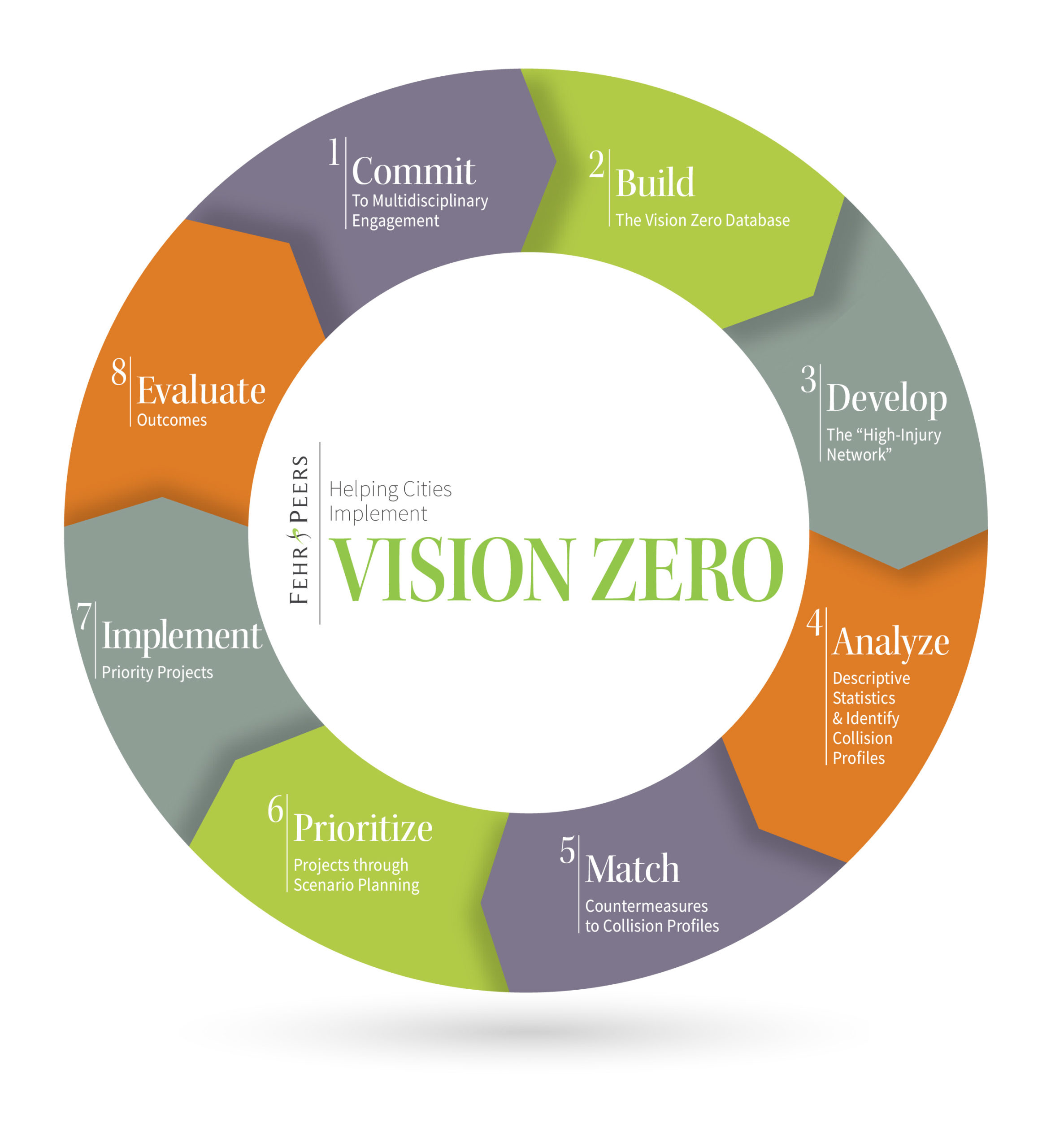Leveraging Grant Funds to Reach Vision Zero
Funding Opportunities: Safe Streets and Roads for All
Acquiring funding through grants and safety programs can be a daunting task, but with appropriate planning and guidance, the application process can be an easy first step in creating safe infrastructure systems.
We are excited to support our clients as the SS4A funding opportunity rolls out. Below is key information about the new funding program to help your agency prepare.
Safe Streets and Roads for All (SS4A) – Program Essentials
-
-
- $5B in grant funding over the next five years
- Funds regional, local, and Tribal initiatives through grants to prevent roadway deaths and serious injuries
- Funds available for Action Plan development and Implementation
- Deadline for applications: Sept 15, 2022, 5:00 PM ET
- More details
-
Navigating the Application
To be eligible for an Implementation Grant, your agency must have a safety plan or other public document that meets the grant-defined requirements for a Comprehensive Safety Action Plan. If your agency is close, but not completely compliant, there may be low effort ways to become compliant and make your agency eligible for Implementation funding.
Eligibility For Implementation Funding
1. Contains analysis of:
-
-
- Existing and historic fatal and severe injury crash trends across the jurisdiction
- Crash location, severity, contributing factors and crash types
- Systemic and site-specific safety needs
- Geospatial identification of high-risk locations
-
2. Contains a comprehensive set of projects and strategies, including timeframe for deployment and explanation of prioritization criteria
3. Finalized or updated between 2017 and 2022
1. High-ranking official(s) have publicly committed to a zero fatality and serious injury goal AND the commitment included a target date to reach zero or a target date to achieve significant declines
2. A task force was established and charged with the plan’s development, implementation, and monitoring
3. Plan development included engagement with the public and relevant stakeholders, their feedback was incorporated into the plan, and collaboration occurred with government departments within and outside the jurisdiction (e.g., transit agencies)
4. Plan includes considerations of equity using inclusive processes, identification of underserved communities through data, and equity impact assessment
5. Plan includes assessment of current plans, policies, guidelines, and standards to identify opportunities for improvement AND discusses implementation through adoption of revised policies, guidelines or standards
6. Plan includes description of how progress will be measured over time AND plan is publicly posted online
Alternative Funding Opportunities
For California Cycle 11, key new elements of this cycle include:
-
-
- LRSP or other certified safety plan is required to be eligible for funding
- Set asides are available for bike lane or separated bike lane projects
- Advanced Dilemma Zone Detection countermeasure was removed
- Mini roundabout countermeasure (with 30% CRF) was added
- Pre-COVID-19 crash data can be used
- Analyzer tool was updated to look at different location types together
-
Learn more about other state HSIP programs.
Fehr & Peers is proud to have been an early collaborator on Vision Zero and Safe System, in particular through our work with cities on their Vision Zero and Local Road Safety Plans; with regional agencies on their Vision Zero How-To Guides, data analysis and technical support; and with state and national organizations on their Strategic Highway Safety Plan pivots to Safe System, policy and communication frameworks, institutionalization efforts, and Core Elements benchmarks. Our continuing roles supporting the Institute of Transportation Engineers and Johns Hopkins School of Public Health on Safe System policy setting and education are also keeping us at the forefront of this emerging and exciting shift for multimodal safety.



